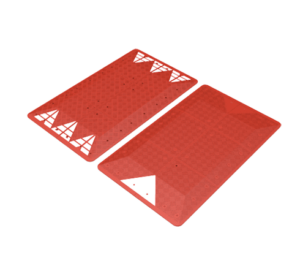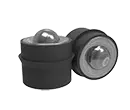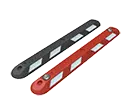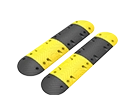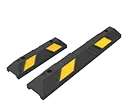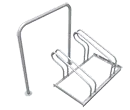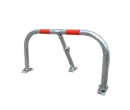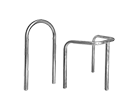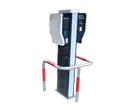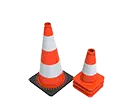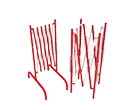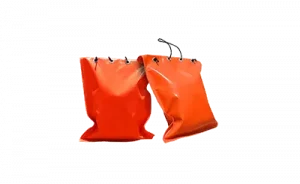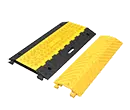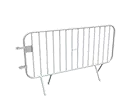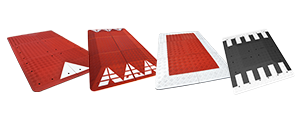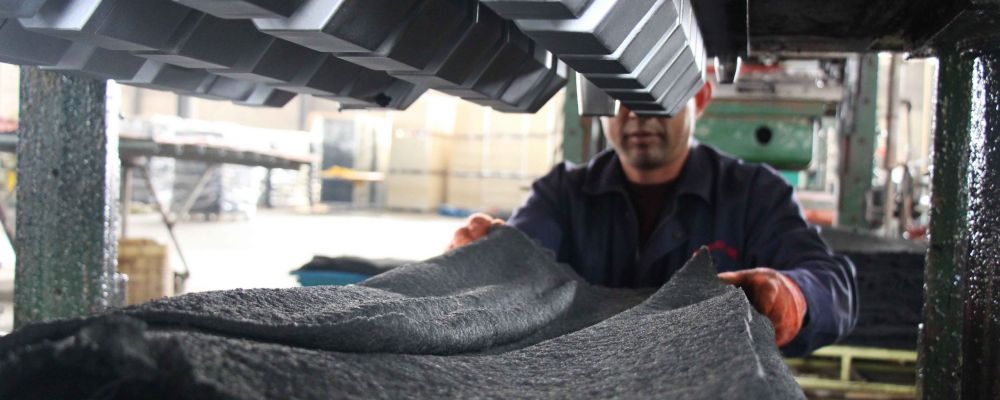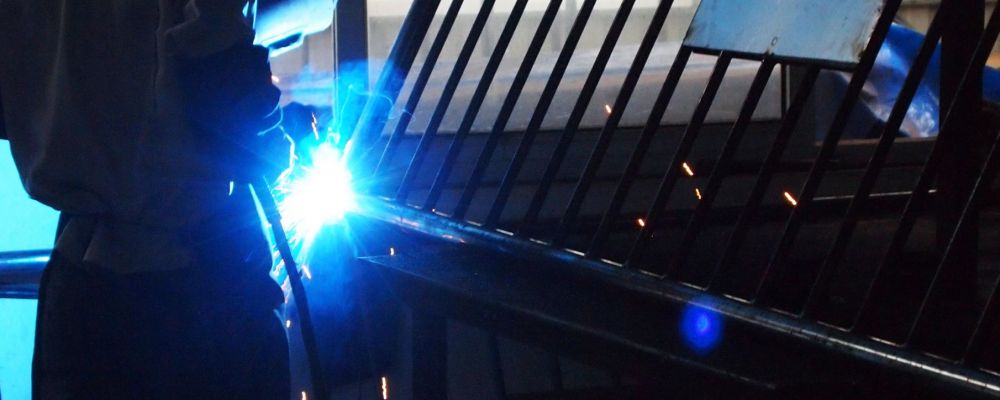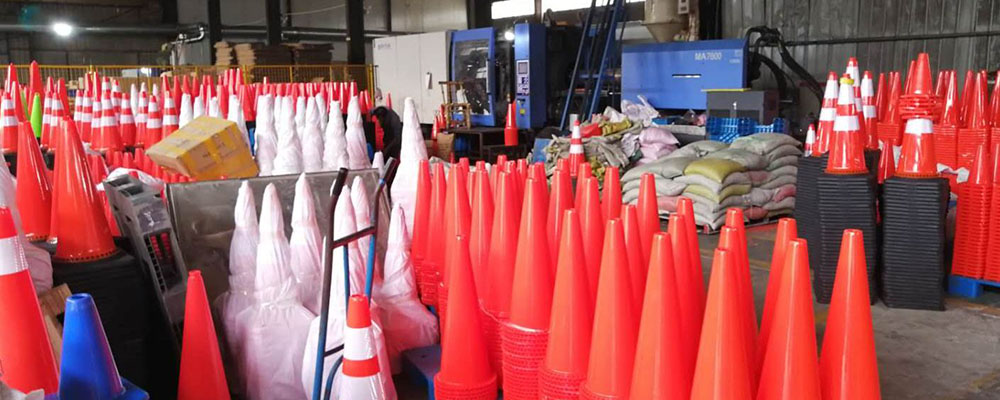Do speed cushions really work?
Speed cushions are a popular traffic control device in Europe. They have a raised surface, which makes passenger cars reduce their speeds. Two to three-speed cushions are installed on the road depending on the width of the road.
The main role of speed cushions is to control traffic flow and make roads safer for pedestrians and drivers. They help in creating friendly, safer neighbourhoods for all.
A rubber speed cushion is not a temporary solution. It is a permanent one. But it has the advantage that It can be removed, unlike those made from concrete or asphalt.
Do you want to know more about this topic? We also have an article talking about what is the role of speed cushions.
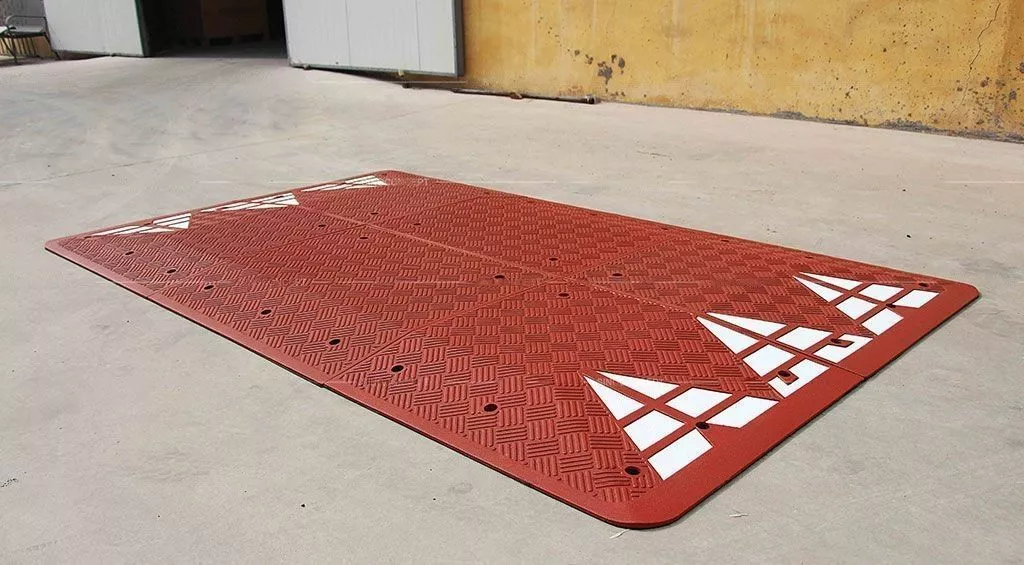
Traffic calming measures
According to the Department of Transportation, traffic calming measures are traffic control devices that ensure traffic safety by reducing the negative impact of using motor vehicles. These traffic-control devices change drivers’ behaviour and create safer conditions for street users on foot.
They are primarily installed to slow down speeding vehicles and reduce traffic volume in urban areas. However, the federal highway administration and municipalities can also use them to meet their traffic reduction goals.
They are usually installed around pedestrian zones, school zones, railroad crossings, residential areas, city streets, cut-throughs, roundabouts, roadways, traffic intersections, pedestrian crossings and parking lots.
Traffic-management devices developed by transportation engineers help create safer neighbourhoods and promote all users’ coexistence.
Common examples of traffic calming measures are speed humps, speed bumps, speed tables, stop signs, crossing signs, traffic signs, message signs, speed signs, construction signs, parking signs, rumble strips, speed limit signs, pavement markings, traffic cones, traffic-lights, traffic signals, signage, and orange cones.

A brief introduction to speed cushions
Speed cushions are a road traffic safety tool that has a raised and rounded upper surface. They are normally placed in the middle of road lanes.
They are designed through traffic engineering techniques such that they are wider than a passenger car, but their width is lesser than that of emergency vehicles, buses, and school buses.
Speed cushions do not have a specific length, width, or height. They are designed considering the road’s width and the size of vehicles in the country in which they are manufactured or used. They are constructed of various materials, such as asphalt, concrete, and rubber.
Unlike a speed hump or a speed bump on the road, a speed cushion does not spread across the entire width of a road or street. Depending on their width, two- to three-speed cushion pads are installed on the road.
These pads have space between them, so they have less impact on an emergency vehicle, cyclist, ambulance, motorist, and bicyclist.
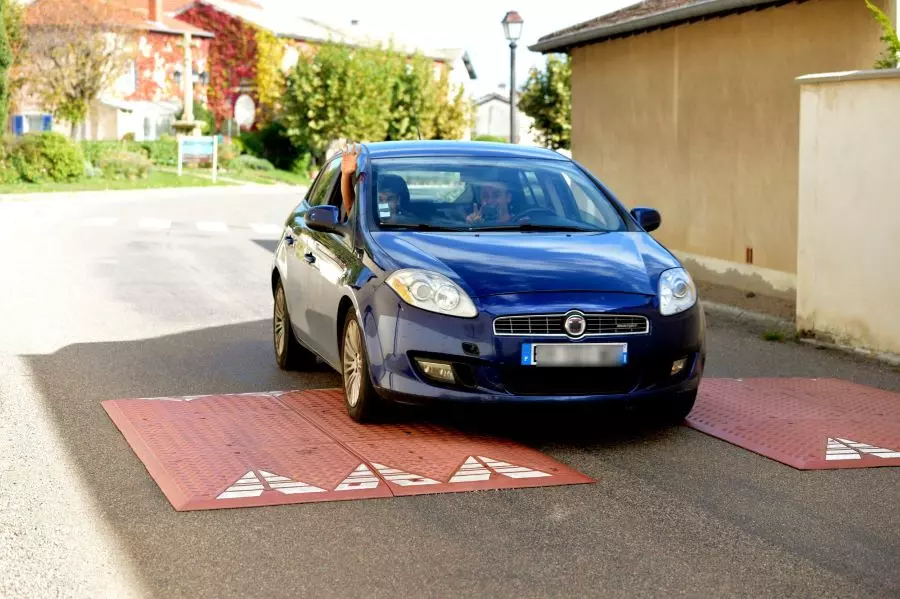
Recommended locations for speed cushions
Speed cushions are used in areas where pedestrian safety is at risk due to heavy traffic and close contact between vehicles and pedestrians. They diminish traffic speed and force vehicles to go below 20 miles per hour (mph).
Recommended locations for speed cushions
See below points:
- Urban areas such as roads and streets with closed drainage. A municipality can install them on the road with open drainage depending on the speed-limit needs.
- Streets from where emergency vehicles and public transport buses do not pass.
- Playground areas, parking lots, residential streets, no-parking areas, and school zones.
- Areas where the speed limit is below 30 km per hour.
Locations where speed cushions should not be installed
See below locations:
- Arterial roads from where emergency vehicles and buses pass very frequently.
- Areas where the percentile speed is more than 70 km per hour.
- Areas where speed cushions are poorly visible to drivers.
- Sectors that have a curvy or unbalanced path.
- Installing speed cushions in such areas increases the collision hazard between vehicles and causes discomfort to the drivers.

The standard procedure for installing speed cushions
Speed cushions can be installed before traffic signals, stop signs, crosswalks, crossings, and unmarked crosswalks to create safer roads and streets. The procedure of speed cushion installation can vary depending on the speed cushion material and other factors.
Below is the basic procedure that people use to install a speed cushion.
- Preparation
Prepare the area where you want to install the cushion pad by marking the area with chalk. After this, screw the lifting eye in the holes.
- Mix the adhesives and prepare a glue bed
Get a bucket and start mixing adhesive materials that you want to use to create a glue bed. Now, pour the prepared adhesive into the centre of the marked area. Get a spreader and start spreading adhesive to create an even glue bed.
- Placement and fitting
Place a speed cushion pad made up of recycled rubber on the glue bed. Fix it to the area using a drill and screws. Cover the screws using screw covers.
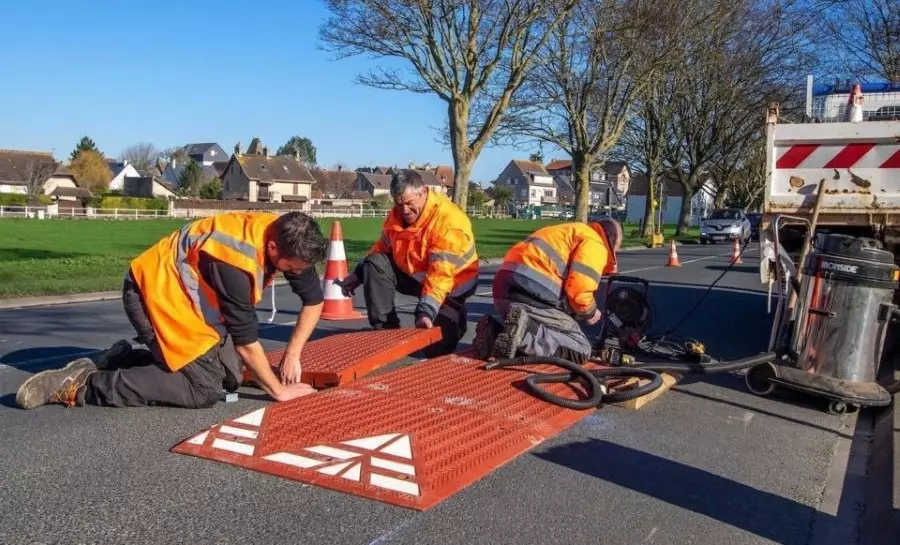
How do speed cushions work?
According to the traffic data, speed cushions and variable-reduced speeding devices can lessen the rate of accidents by up to 44%.
These speed control devices diminish vehicular acceleration and help with police enforcement.
Speed cushions have wheel cutouts in between them through which larger vehicles, ambulances, etc., can easily pass without decreasing speed. They effectively reduce the rate of helping vehicles travel at a safer speed in high-traffic areas.
Bus routes also have speed cushions because they allow them to move over them quickly. Speed cushions are placed in areas that have good visibility so that drivers can see them when they are at a sight distance.
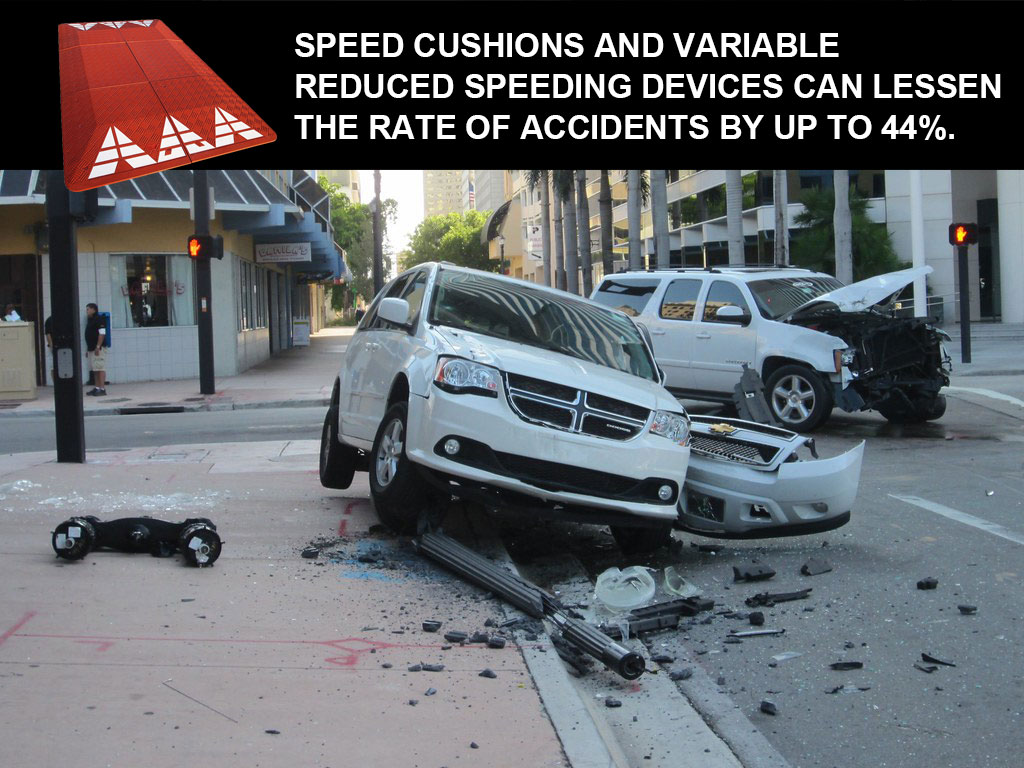
Why should speed cushions be used?
Speed cushions and other traffic control devices have several advantages.
Some of these benefits are:
- Speed cushions are a proven speed-reducing tool that can decrease the accident rate and make roads and streets safe and friendly for both drivers and pedestrians.
- Unlike speed bumps and speed humps, they do not force emergency vehicles to lower their speed.
- They allow the passage of rainwater, which helps in drainage.
- Rubber speed cushions are easy to install and remove. You can remove them when you do not need them on the road or install them temporarily to meet your speed limit objectives.
- As compared to some other traffic calming measures, speed cushions are available at moderate costs.
- They come in different materials and dimensions, so you can choose a product that best meets your road safety needs.
- Cyclists and motorists can pass through gaps between speed cushions so they do not cause discomfort.
- Buses and trucks do not have to slow down and pass over speed cushions without changing their speed.
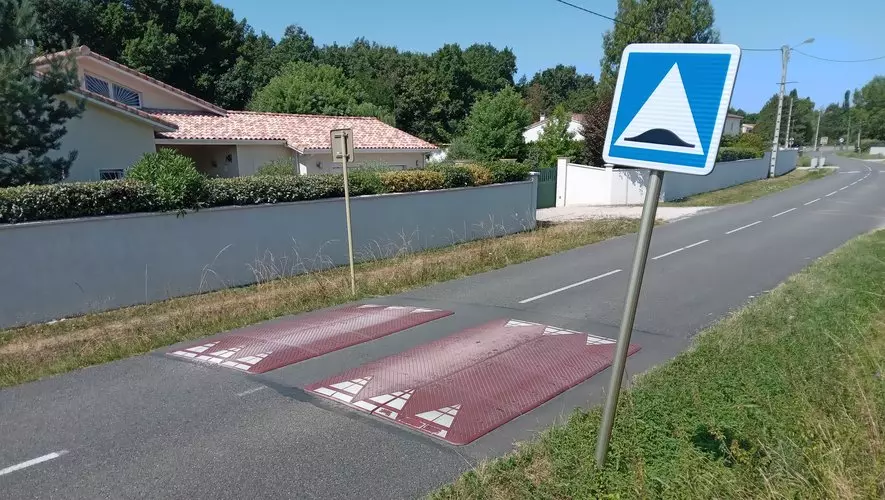
Conclusion
Speed cushions control traffic flow and help save lives on roads and streets. They have a reflective surface due to which motor-vehicle drivers can see them when they are at a distance.
They are installed in areas where people and vehicles have a risk of collision, which can cause many fatalities every year. Compared to speed bumps and speed humps, speed cushions are not spread throughout the width of a road.
Instead, they have gaps allowing cyclists, ambulances and buses to move without decreasing speed.
You should request your municipality install speed cushions in your area if you believe they can help reduce accidents.
To learn more, we advise you to refer to the following pages:

